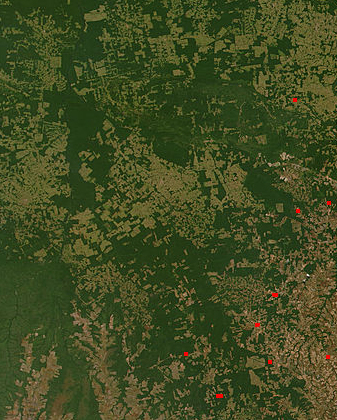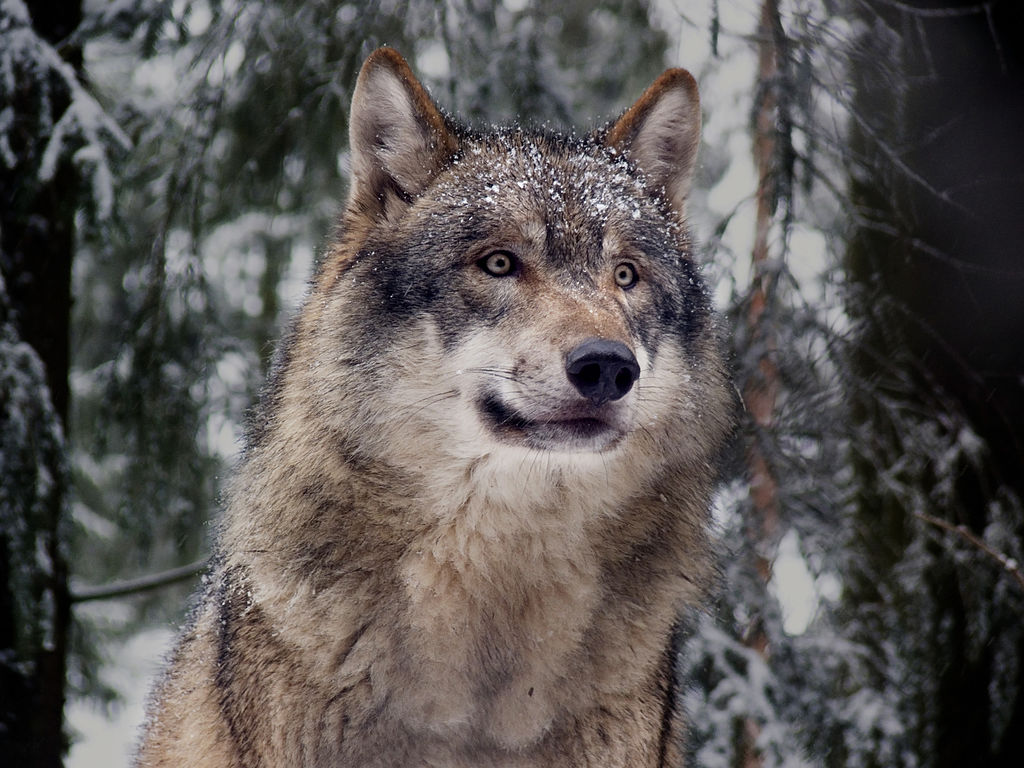Tropical Rainforest
 |
| Sunrise filtering through the rainforest. By Lip Kee, on Wikimedia Commons. |
The tropical rainforest is a unique
biome. They are mainly located between the Tropic of Cancer and the Tropic of
Capricorn centering around the Equator (Where are Tropical Rainforests?). The
average temperature is 77 degrees Fahrenheit with humidity levels of up to 88%.
There is great diversity of organisms throughout, both plants and animals. Even
though they only cover around 2% of the worlds surface it is estimated that
there is from 3 to 50 million different species residing in this biome (Butler).
The biome gets its name from the warm temperatures and the rainfall it receives,
from 80 to 400 inches per year. While the tropical rainforest ranks number one
out of biomes for net productivity, the soil of the rainforests lack nutrients.
All the rain washes out the nutrients out of the soil. Once the trees are cut
down they won’t grow back. The reason the vegetation is so lush is from the top
soil. It is composed of organic matter from decaying animals and plants, this
cycle is key to keeping nutrients available.
Primary Producer of the Rainforest
 |
| Moss on rocks are key primary producers. By Zappa san, on Wikimedia Commons. |
A key primary producer in this
cycle is moss, the mosses decompose the dead organic matter to break down the nutrients
building up the soil. The mosses absorb sunlight, carbon dioxide, and water to
create energy which they use to also prevent erosion. The mosses adaption to breaking down matter is important to providing nutrients to other life.
 |
| Jaguars are a top consumer in the rainforest. By en:User:Cburnett, on Wikimedia Commons. |
Top Consumer
An important consumer is the
jaguar. Jaguars markings help them camouflage into its surroundings making them
a stealthy hunter. They are versatile on foot with their agility to climb trees
and can also swim well. Without a large predator like the jaguar, populations
could grow too large if there was not a hunter to keep them in check.
Tropical Rainforest Compared to the Temperate Deciduous Forest
 |
| Leaves changing colors. By Norbert Nagel, on Wikimedia Commons. |
The tropical rainforest is very
different from the temperate deciduous forest that we live in here in New
Hampshire. Here we have four seasons, compared to just spring and summer in the
rainforest. Sunlight is most similar in our summers where the trees are so
dense not much hits the forests floor such as the rainforest where the layered
canopies keep most light out. A major difference in the trees is that they lose
their leaves at the end of fall and sprout back in the spring whereas in the
rainforests leaves remain all year round. Temperate deciduous forests are thick
with leaf litter and the soil is rich in nutrients. It also yields high net
productivity, second only to the tropical rainforests.
Primary Producer of Temperate Deciduous Forests
 |
| Deciduous forest in different stages of life. By Aura, on Wikimedia Commons |
The key primary producer in a temperate forest is trees. They are able to obtain nutrients by working with fungal mycorrhizae. Trees adapt to their environment by becoming dormant in the winter, this is why they lose their leaves and grow new ones once the warm weather and spring arrives. Shrubs and grasses grown in between the gaps in the trees which is similar to the rainforest where the trees and bushes grow in layers to fill out the canopy.
Primary Consumer of the Temperate Forest
A primary consumer in a temperate
deciduous forest is the wolf. They used to be more common in New Hampshire in
the past but have recently been sighted more frequently. The wolf is a key
organism in Yosemite National Forest. They were once hunted out of the area but
were reintroduced after deer populations rose out of hand. Researchers found
that they were key in keeping the biome in cycle so as all parts of the
ecosystem could coexist naturally.
Threats to the Biomes:
Tropical Rainforest:
 |
| Deforestation shown by satellite imaging. By NASA, on Wikimedia Commons. |
A major threat to life in the
tropical rainforest is deforestation. Humans are clearing parts of the
rainforests to use the land for themselves. Some of these uses are for the
lumber of the large old trees and agriculture. So much of the rainforest has
been lost due to deforestation, we are losing 18.7 million acres of forests per year, this equals to 27 soccer fields each minute (Deforestation). As stated above, once the trees are cut down,
they cannot grow back. Once the area is cleared it is lost forever. Deforesting
also is driving many native and endangered species to extinction. Earth is in the middle of its sixth mass extinction. Scientists have estimated that we are losing species at 1,000 to 10,000 times the background rate equaling to dozens of species loss each day (The Extinction Crisis). We do not even know of all the species that live here on Earth and we are losing them!
Deforestation
is also happening in the boreal forests found in Canada and Russia. There the
trees are being used mainly for lumber and are then replanted the next season.
While the soil is also low in nutrients here, the main producer, the white
spruce, can grow in shallow weak soil allowing for the replanting after clear
cutting. Habitat loss is
also an issue here when the trees are cut many organisms must
relocate their homes to survive.
also an issue here when the trees are cut many organisms must
relocate their homes to survive.
Temperate Deciduous Forest:
 |
| Mount Monadnock, a popular mountain for hiking near Keene. By Bob P. B. on Wikimedia Commons. |
Keene is surrounded by mountains
littered with the deciduous trees of the forests. Before humans begun advancing
in technology and living, forests made up a majority of the state. In order for
us to live the way we do today, forests had to be cleared for human
advancements. The population in Keene has not grown yet we are still clearing trees to build more houses. By supporting local conservation organizations we can help to limit the amount of trees being removed.
Ways to Help in Keene:
Some activities that we do related to deforestation would be
hiking of the mountains surrounding us. While it appears that the nature is
mostly untouched, besides from the occasional litter and signs directing you
were to go, the tops of the mountains have been clear cut to give us the views
we seek on our trips up the mountain. While there doesn’t seem like there is
much that we can do to help the previous situations, we can make sure that when
we do go out in the forests we leave everything as it is and not litter. Another
thing that can be done is buying sustainably grown food. The biggest threat to the deforestation of the rainforest is due to fast food chains growing their food there due to cheaper costs. Not consuming the fast food chains food, and stopping your friends from doing so as well, is another way that we can help the deforestation loss. 
Resonates: The information on the primary producer moss decomposing dead organic matter was interesting. Also the information about the jaguars coloring allowing them to blend in & about them swimming was cool.
ReplyDeleteNew: 3-50 million different species residing in tropical rainforests was pretty fascinating to read about. It makes me wonder if each of these species has been documented because it must be near impossible to know every species.
Technical Component: I like the layout you created for this blog, it is unique.
Suggestions: I love the pictures you have picked but if you made them large instead of small it would be easier to see them.